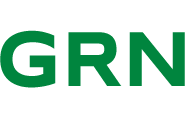On January 29, 2025, the European Commission published the EU Competitiveness Compass. The Compass lays out the Commission's strategy, reflecting the findings of the Draghi report on Competitiveness, and guiding the EU executive's work for the coming five years. It comes ahead of the anticipated Clean Industrial Deal, expected in February 2025.
SolarPower Europe has issued the following statement in reaction.
Walburga Hemetsberger, CEO of SolarPower Europe, (she/her) said:
"The European Commission's commitment to competitiveness begins in earnest with this new publication. The Competitiveness Compass points to the right problem: our structural fossil fuel dependency. It also points to the right solutions: more renewables, faster electrification, and stronger system flexibility.
It is also good news that the European Commission will set out a 2040 climate target - decarbonisation goes hand-in-hand with Europe's economic prosperity.
Solar is the key competitiveness solution for our citizens and industry. Together with wind, solar saved the EU 59 billion in fossil fuel import costs in 2024. Solar has been the fastest growing technology in the last five years, but is approaching slowdown. We now expect decisionmakers across Europe to lift the remaining barriers to offer clean, affordable, homegrown energy to industry."
Arthur Daemers, Senior Policy Advisor, SolarPower Europe, (he/him) said:
"Solar PV is synonymous with affordable energy, but we still need to unlock its full potential.
The announced Electrification Action Plan and European Grids Package must accelerate all those solutions; the Grids Package should become the Grids and Flexibility Package. There is no time to waste to decarbonise Europe with our most efficient, competitive asset: renewable electricity.
The Affordable Energy Action Plan must help industry access it through Power Purchase Agreements (PPAs) and better market integration, but can also support them with the non-energy parts of their energy bills; grid fees and taxes."
Anett Ludwig, Head of Supply Chains at SolarPower Europe, (she/her) said:
"We need a strong industrial base for solar PV manufacturing in Europe and resilient value chains. It is encouraging to see that the European Commission is ready to use various policy instruments to promote clean tech manufacturing, to be adapted to each technology's specificities.
We are looking forward to seeing funding, and especially Important Projects of Common European Interest (IPCEIs), made simpler and open to new sectors. This is potentially good news for our European inverter industry, which is key for the continent's cyber- and economic security."
Notes
- In 2024 alone solar PV installed 66 GW in the EU; equal to powering 20 million more homes and businesses with low-cost, safe and clean energy. (SolarPower Europe)
- In 2024, solar overtook coal generation for the first time in the EU, saving. Solar and wind together saved the EU 59 billion fossil fuel import costs in 2024. (Ember)
- Modelling shows that more renewables, electrification and flexibility can boost European competitiveness, slashing average day-ahead energy prices by 25% by 2030, and by 33% by 2040. At the same time, the solar capture prices will be 71% greater in 2030 compared to the baseline, and 54% higher by 2040, supporting the sustainable growth of solar project developers. Discover Mission Solar 2040.
- Electrification means building an energy system on the principal of electricity - rather than combustion. So induction cookers rather than gas hobs, and vehicles that run on electricity, rather than diesel and other fossil fuels. Today, 24% of Europe's energy system is electrified. We should reach at least 60% electrification in the EU by 2050 to achieve climate neutrality. Discover the Electrification Alliance.
- SolarPower Europe published its initial proposal for an IPCEI to support inverters in June 2024, along with our latest market analysis on European inverter manufacturing. Read here.









